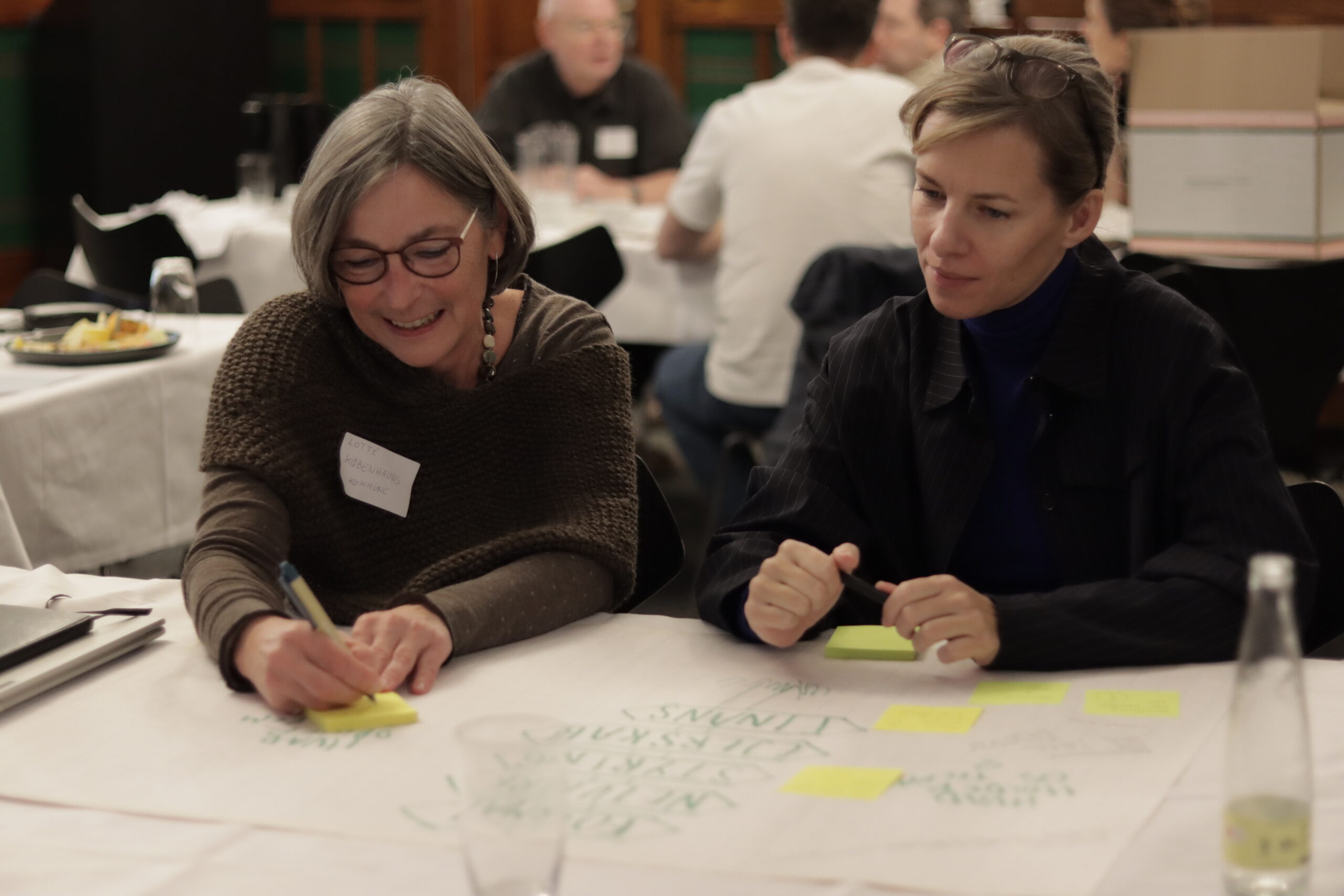Collaborative workshops are pivotal in shaping the blueprint for Copenhagen municipality’s ambitious effort to further reduce emissions and set new green standards for the city.
A workshop series, a collaborative effort between the Copenhagen municipality, BLOXHUB, and industry stakeholders, is laying the groundwork for an ambitious climate plan that will unfold by 2035.
Over the course of three workshops, industry partners contributed insights into three areas that are seen as crucial for achieving Copenhagen’s climate goals: transforming existing buildings, extending their lifespans, and ensuring that new construction adheres to sustainability principles, circularity, and respect for ecosystems and urban cohesion.
The aim of the new climate plan is to reduce CO2 and resource consumption in construction and infrastructure. But to meet the objectives in the plan, it is important that actors and experts from the construction sector are involved so that the climate plan is not only developed by and for the municipality, underlines Mette Skovbjerg, Head of the Climate Department, Technical and Environmental Administration, City of Copenhagen.
We asked Mette Skovbjerg how the insights from the workshop series will impact Copenhagen Municipalities’ forthcoming climate blueprint.
Q: What essential results have you gained from the workshop series?
A: It is important that the City of Copenhagen work together with the construction sector on the future development of the city, that we share knowledge and insights, and collaborate in finding new solutions that will minimize the environmental impact from the building sector. The workshop series was a great opportunity to get this work started.
The knowledge and dialogue from the workshop have contributed to shaping a shared narrative and hierarchy of initiatives for construction and infrastructure, which will serve as the foundation for the approach in the climate plan.
Furthermore, we have gained several concrete insights, such as the need to establish new expectations regarding aesthetics in older buildings so that residents and users do not expect aesthetics equivalent to those of new constructions. Additionally, we will take into account the knowledge that social housing associations are already working on integrating climate aspects into their maintenance planning.
Q: Climate initiatives require action throughout the value chain. How did you select the focus areas?
A: The three focus areas of the workshop series, urban redevelopment, transformation, and operation and maintenance, were chosen because we believe these areas hold significant potential for CO2 reductions and will, therefore, be important in the City of Copenhagen’s upcoming climate plan.
It has been valuable to hear the industry’s perspective on the areas and experience their commitment to climate action, where it will be necessary to work together in the transition of the construction sector. As a municipality, we have received input on how we can support the much-needed climate actions throughout the entire construction value chain, involving citizens, building owners, investors, consultants, engineers, architects, and contractors.
Q: What has surprised you about the process and the solutions you have obtained?
A: Many challenges within the building and construction sector are widely acknowledged. Notably, we’ve received feedback emphasizing the necessity for a detailed definition of transition strategies. Changes in collaboration, design, and planning processes are deemed essential as they significantly influence the environmental footprint across a structure’s entire lifecycle. Additionally, insights were shared regarding the significance of effective operation and maintenance practices in prolonging the lifespan of buildings and resources. This highlights the imperative to consistently maintain materials and components to prevent severe damage and costly replacements resulting from resource neglect.
Throughout all three workshops, the Doughnut Model served as a framework. It demonstrated the intricate interconnectedness among climate initiatives, planetary boundaries, and social sustainability. Witnessing the utilization of the Doughnut Model in guiding solution development was particularly fascinating, as it facilitated the creation of strategies that not only address climate concerns but also positively impact social sustainability and other planetary boundaries.
Q: How do you expect the workshop series to impact the final climate plan?
A: The insights garnered from the three workshops contribute to the background knowledge shaping the basis of the specific actions outlined in the climate plan, Input received throught the workshop series will be integrated into developing the forthcoming climate plan.
Currently, we are utilizing an action pyramid framework within the City of Copenhagen, outlining our approach to climate action in construction. We anticipate that the climate plan will encompass initiatives spanning all layers of the pyramid. The layers represent the potential for climate reduction, with the highest potential at the pyramid’s apex. (See the pyramid below the interview).
Q: What recommendations would you give other municipalities using the workshop format to develop their climate plan?
A: I would encourage other municipalities to adopt the workshop format as it offers an opportunity to foster connections between the private building sector and the municipality. Across the three workshops, we delved into specific urban development areas and buildings in Copenhagen as case studies. Engaging participants with familiar places in Copenhagen proved to be a great way to stimulate discussion and gather valuable input, which can subsequently be used for actionable initiatives at the municipal level.
Illustration of the climate action framework for Copenhagen Municipality:








